There’s nothing like a beautiful easy-care houseplant to liven up a space, and growing jade plants fit that description to a T! In fact, growing them indoors couldn’t be easier.
Jade plants are a type of succulent that are slow growing but can live for many years. Quite often, so long that they are often passed down to family members or given to friends as gifts.
They feature multiple thick, oval, fleshy leaves that range from green to reddish-tipped in color. The glossy leaves can grow to around two inches in length. Their stems are thick and woody and have a miniature tree-like resemblance.

Mature plants can produce white or light pink flowers in the wintertime. However, it is rare to see them on indoor plants. They thrive in the heat of the summer but you do need to bring them indoors during the cooler months since they are only hardy in Zones 10 and 11.
As long as a few basic care items are met, then jade plants can grow and thrive within your home. Let’s take a look at just how simple it is to enjoy growing jade plants in your home!
How To Grow And Care For Jade Plants
Caring for jade plants, Crassula ovuta, is fairly straightforward. Since they are often kept indoors in most locations, you can find them in garden centers to purchase at any time of the year.
They look beautiful when paired with actual indoor trees like money trees, weeping figs, or dwarf umbrella trees. There are also other great succulents you can grow since they prefer all of the same growing conditions as jade plants. (Be sure to specifically check out jade’s “disfigured cousin,” Gollum Jade!)
Jade plants can grow between 3 to 8 feet tall with the right growing conditions, pruning, and occasional repotting. In addition, you can easily propagate jade to create new plants from established ones, all for free!
Proper Lighting
One of the most important factors in growing jade plants is proper lighting. Improper lighting will cause plants to get tall, leggy, and top-heavy.
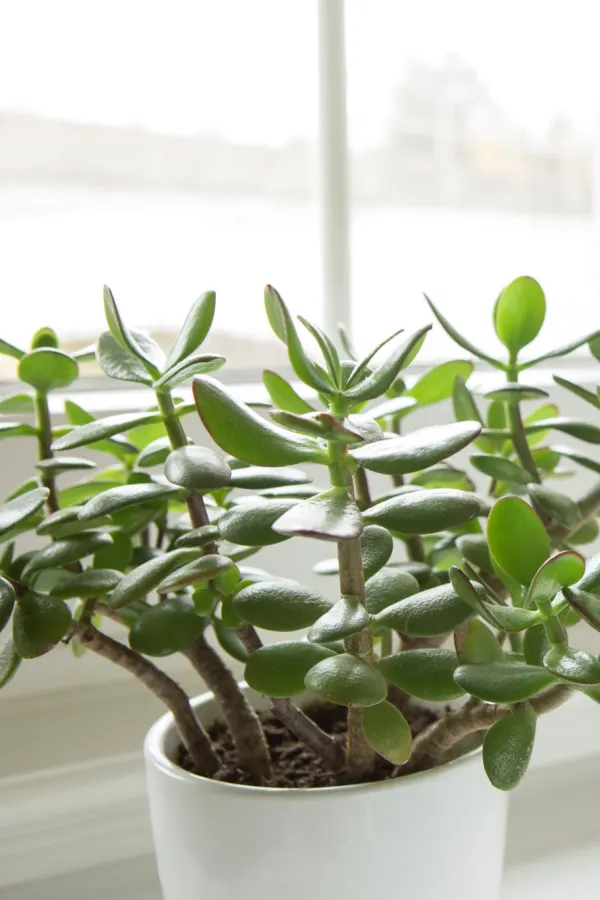
Jade plants need full sun when they are growing outdoors. So if you are growing jade indoors or have brought your plant inside for the winter, where you place it within your home plays a vital role in how it survives.
Even though they like full sun outdoors, they should be kept out of direct sunlight indoors. Their leaves can easily get burnt, especially when plants are young and their foliage is more tender.
Aim for providing jade plants with around 6 to 8 hours of indirect sunlight daily. Placing plants in front of a south-facing window that has a sheer curtain is a perfect location for jade plants. You can also place them near a west-facing window as another great alternative. Be sure to rotate the plant occasionally for even growth.
Using Supplemental Lighting
If you do not have an acceptable south or west-facing window location within your home, you can also use supplemental lighting instead.
While there are lights that are specifically labeled as “grow lights,” you can also use basic LED shop lights and get the same effect without the higher price tag. Keep lights a few feet above the plant and use a timer so they stay on for the recommended 6 to 8 hours a day.
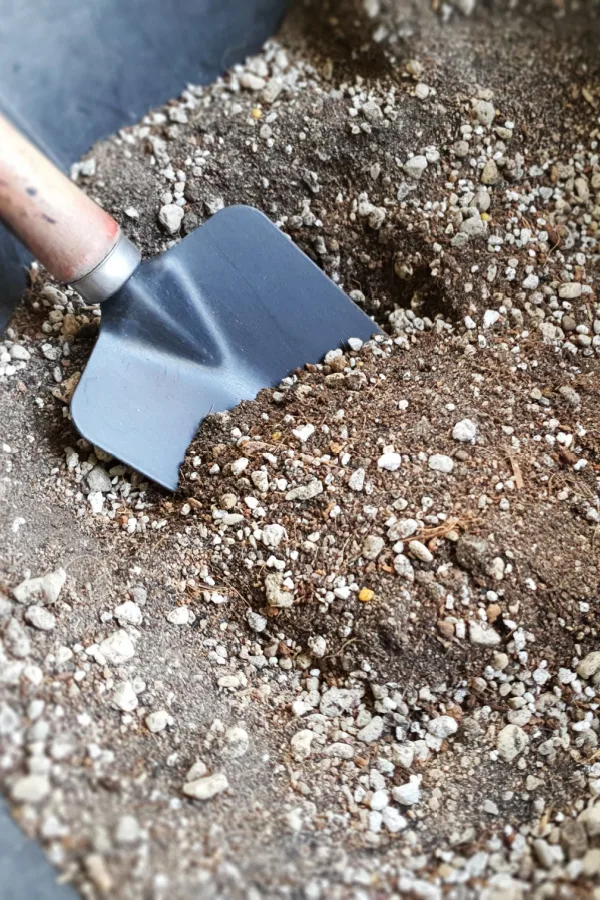
Soil
Since jade plants are technically succulents, choose a potting soil that is geared toward cacti and succulents. The soil should drain efficiently and quickly to avoid excess moisture and keep the plants from standing in water.
If you only have all-purpose potting soil available, amend the soil before using. Add in sufficient amounts of perlite and even some sand to help aid with drainage and loosen up the soil.
Watering
While jade plants are actively growing in the spring and summer months, you need to water them a bit more often than during the winter months. That means you will likely water every week or so during the growing seasons and then only about once a month during the winter.
Ensure that your container has sufficient drainage holes and that you are using the correct type of soil. Jade plants are a bit drought-tolerant, but they do not like to stand in overly saturated soils. Root rot can be a big issue if you keep the soil too moist.
When you do go to water, do so deeply at the soil line until the water starts to run out of the drainage holes. Use filtered or bottled water and avoid getting the water on the foliage if possible. Wait to water again until the soil has almost completely dried out.
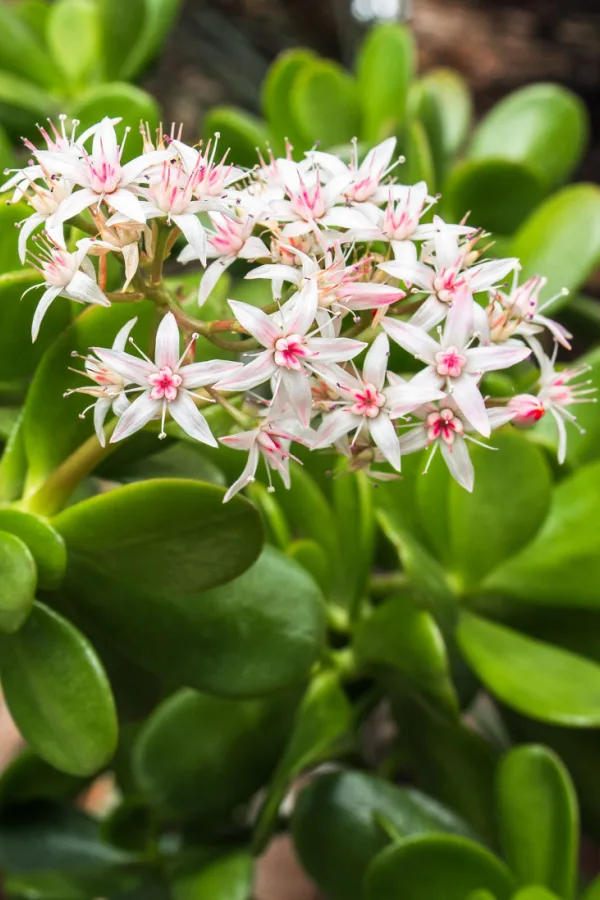
If the leaves are starting to shrivel and dry up, then the jade plant likely needs more water. If the leaves look mushy or if leaves start to drop, then the plant is likely getting too much water.
Temperature & Humidity
The average household temperature of around 70º Fahrenheit (21º Celsius) works best for jade plants. While they can handle lower nighttime temperatures, never keep plants in a location where the temperature drops below 50º Fahrenheit (10º Celsius).
Also, be sure to keep them away from cold drafts and bring them indoors if you had them outside in the summer months. Since jade plants are succulents, they do not need extra humidity other than what is already available in your home.
Fertilizing
Only feed jade plants during their active growing season (in the spring and summer months). When you fertilize, choose a formula that is geared toward succulents and cacti for the best results.
Liquid fertilizers or slow-release granular fertilizers both work well. Just be sure to read the directions prior to use so you can make sure to apply it correctly and often enough.
Propagating Jade Plants
You can easily propagate jade plants by using a leaf or cutting from a mature plant. This should happen during the summer months since plants are actively growing and absorbing as many nutrients and light as possible.
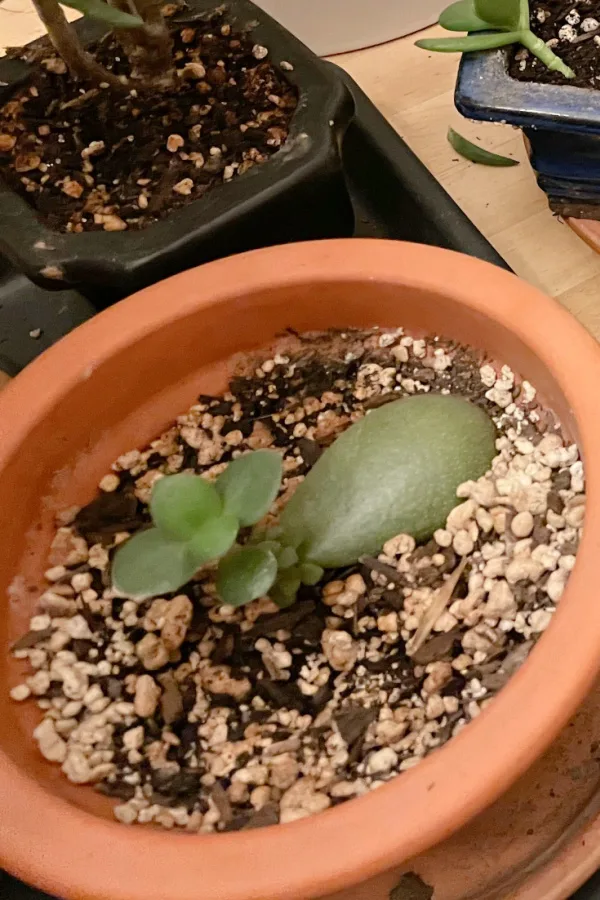
Propagation Using Leaves
Choose a healthy leaf that is plump and blemish-free. Carefully twist the leaf from the parent plant, ensuring that the stem stays intact and attached to the leaf.
Allow the leaf to dry out for a couple of days. This allows the end of the stem to create a scab. Dip the scabbed end into a rooting hormone to help speed up the rooting process (this is optional).
Next, place the leaf on top of a mixture of potting soil and perlite. Unlike cuttings from other houseplants, you do not need to bury the leaf under the soil in order to start rooting – it only needs to be touching the surface of the soil.
Place the container in a bright, warm location and wait for the roots to start growing. You may need to mist the plant occasionally to help keep the soil from getting too dry but do not water it. The roots should start to appear in around 2 to 3 weeks as well as additional growth.
Once the roots have grown a little, you can then plant them in a new container and care for them like you would a mature jade plant.
Propagation Using Cuttings
Get a piece of stem that is a few inches long and has a couple of leaves from a healthy, established plant. Topping the plants is a great way to get healthy cuttings and to keep the plant nicely pruned.
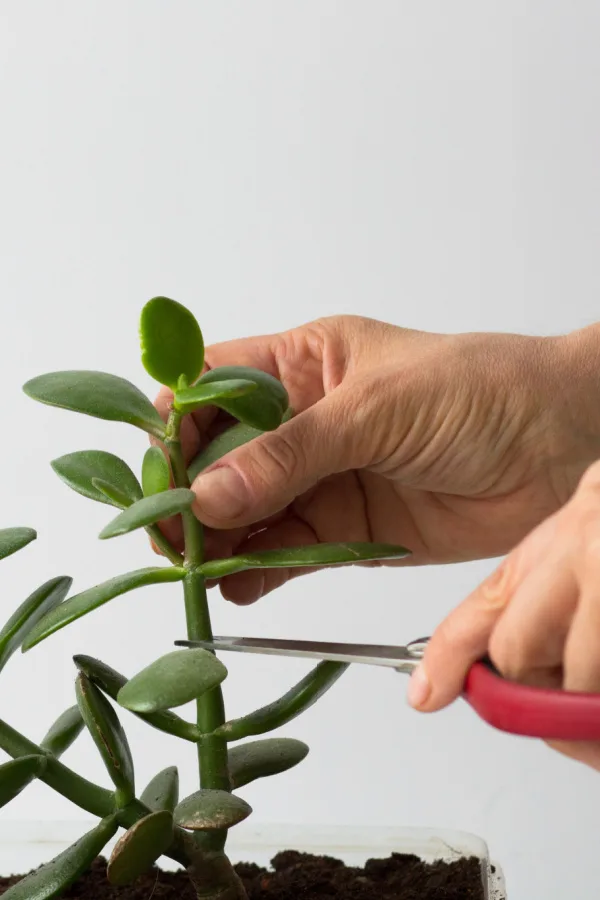
Just like you did for the leaf, let the cutting dry out for a few days to produce a scab on the ends. If preferred, dip one of the ends in a rooting hormone powder prior to planting.
Plant the cutting in a small container of potting soil mixed with perlite. Lightly water and keep the soil slightly moist. Place the container in a bright, warm location.
Rooting should take place in about 2 to 3 weeks. To test for readiness, if the plant gives you a bit of resistance when you gently tug on it, then the cutting has properly rooted. It is then safe to treat it like you would as described above.
To Conclude. . .
Growing this easy-care houseplant doesn’t have to be time-consuming or difficult. With the right conditions, you just might end up with a jade plant that you’ll be able to keep for many years to come!
Follow Our Facebook Page For Even More Great Tips! Simple Garden Life Facebook Page
Simple Garden Life is a website dedicated to keeping gardening fun, simple and enjoyable! We publish two new articles each week along with a new garden podcast episode every two weeks. This article may contain affiliate links.
